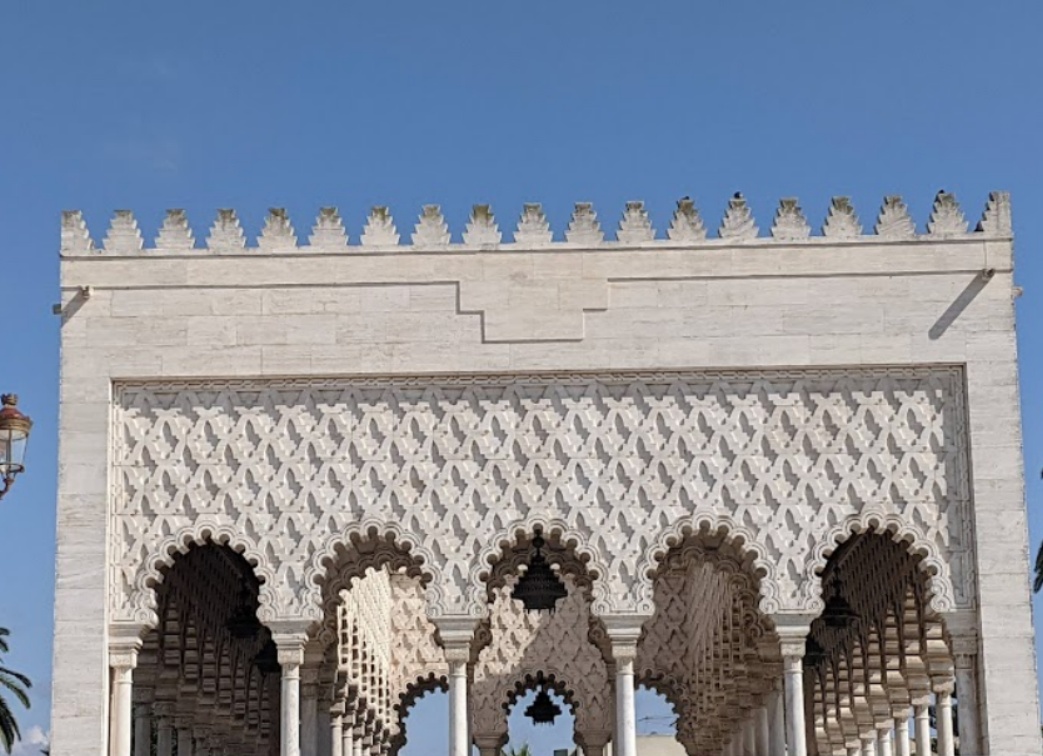Mausoleum of Mohammed V: A Monument of Majesty and Memory
Table of Contents
Introduction to The Mausoleum of Mohammed V
Situated in Morocco’s capital, Rabat, the Mausoleum of Mohammed V is a site of profound national significance and an architectural masterpiece. This regal tomb houses the remains of Mohammed V, the beloved king who led Morocco to independence, and his two sons, King Hassan II and Prince Moulay Abdellah. Beyond its role as a final resting place for Moroccan royalty, the mausoleum stands as a symbol of the nation’s reverence for its leaders and its commitment to preserving their legacy.
Historical Context
Mohammed V, revered as the “father of independence,” was instrumental in leading Morocco towards freedom from French and Spanish colonial rule in 1956. His leadership through turbulent times and his efforts to unify the Moroccan people are deeply respected. Following his death in 1961, it was decided that a mausoleum would be constructed in his honor, not only as a tomb but also as a place of memory and reflection for the Moroccan populace and international visitors alike.
Architectural Grandeur
The Mausoleum of Mohammed V is celebrated for its stunning architectural design, which incorporates traditional Moroccan and Islamic art forms. It was designed by the Vietnamese architect, Vo Toan, but the craftsmanship and artistry are purely Moroccan.
Structure and Design
The mausoleum is characterized by its white marble facade and green tiled roof, a color that holds deep religious significance in Islam, symbolizing paradise. The building is rectangular with a traditional Moroccan riad layout—a central courtyard open to the sky, signifying the openness of the earth to heaven.
Interior Splendor
Inside, the mausoleum is a testament to exquisite Moroccan craftsmanship. The floor and walls are adorned with zellij (mosaic tilework) that tells stories of Moroccan culture and history through complex geometric patterns and vibrant colors. The cedar woodwork and marble pillars are intricately carved, showcasing the skill and precision of Moroccan artisans. Above, the gold-leafed dome ceiling offers a breathtaking view, reflecting the intricate artistry that Morocco offers.
Cultural and Spiritual Significance
The Mausoleum of Mohammed V serves not only as a historical monument but also as a spiritual site. It stands adjacent to the Hassan Tower and overlooks the Atlantic Ocean, symbolically positioning Mohammed V’s resting place between the spiritual heritage of Morocco and the endless possibilities symbolized by the ocean.
Symbol of Unity
The mausoleum is more than a royal tomb; it is a potent symbol of the unity and continuity of the Moroccan state. By housing Mohammed V and his successor Hassan II, it links the past leadership with the present, reminding visitors of the dynasty’s role in shaping modern Morocco.
Visitor Experience
Visitors to the Mausoleum of Mohammed V are greeted by the Royal Guard, which adds an element of solemnity and grandeur to the experience. The site is open to the public and attracts tourists and Moroccan citizens alike, who come to pay their respects and admire the artistry of the building.
Educational Role
The mausoleum also plays an educational role, offering insights into Moroccan royal history and Islamic art. Guided tours are available, providing historical context and highlighting the architectural features of the mausoleum, making it a valuable educational experience for both locals and tourists.
Preservation Efforts
Given its importance, the Mausoleum of Mohammed V is meticulously maintained. Preservation efforts ensure that the artistic and structural integrity of the mausoleum is upheld, allowing it to stand as a lasting tribute to Morocco’s royal history.
Conclusion
The Mausoleum of Mohammed V is a cornerstone of Moroccan cultural and historical heritage. It is not only a mausoleum but a monument that encapsulates the respect and admiration of the Moroccan people for their former king. Its breathtaking architecture and the profound sense of history it conveys make it a must-visit for anyone interested in the depths of Moroccan culture and the legacy of its leaders.
Additional Resources
For those interested in exploring more of Rabat’s historical and cultural sites, nearby landmarks such as the Hassan Tower and the Chellah necropolis offer further insights into Morocco’s rich history. Together with the Mausoleum of Mohammed V, these sites form a comprehensive cultural itinerary, providing a deep understanding of the historical, architectural, and spiritual landscape of Morocco’s capital.
As Seen On:
Official Private Driver Morocco has been featured or mentioned by leading media outlets including Business Insider, Street Insider, Central Charts, Yahoo Finance, Bar Chart, and Market Watch, recognizing our commitment to premium transportation services and exceptional customer experience.




Hassan Tower: A Testament To Morocco's Imperial Grandeur - Private Driver Morocco
[…] those interested in exploring more historical sites in Rabat, the nearby Mausoleum of Mohammed V and the Chellah necropolis offer further insights into the rich history of Morocco’s dynastic […]